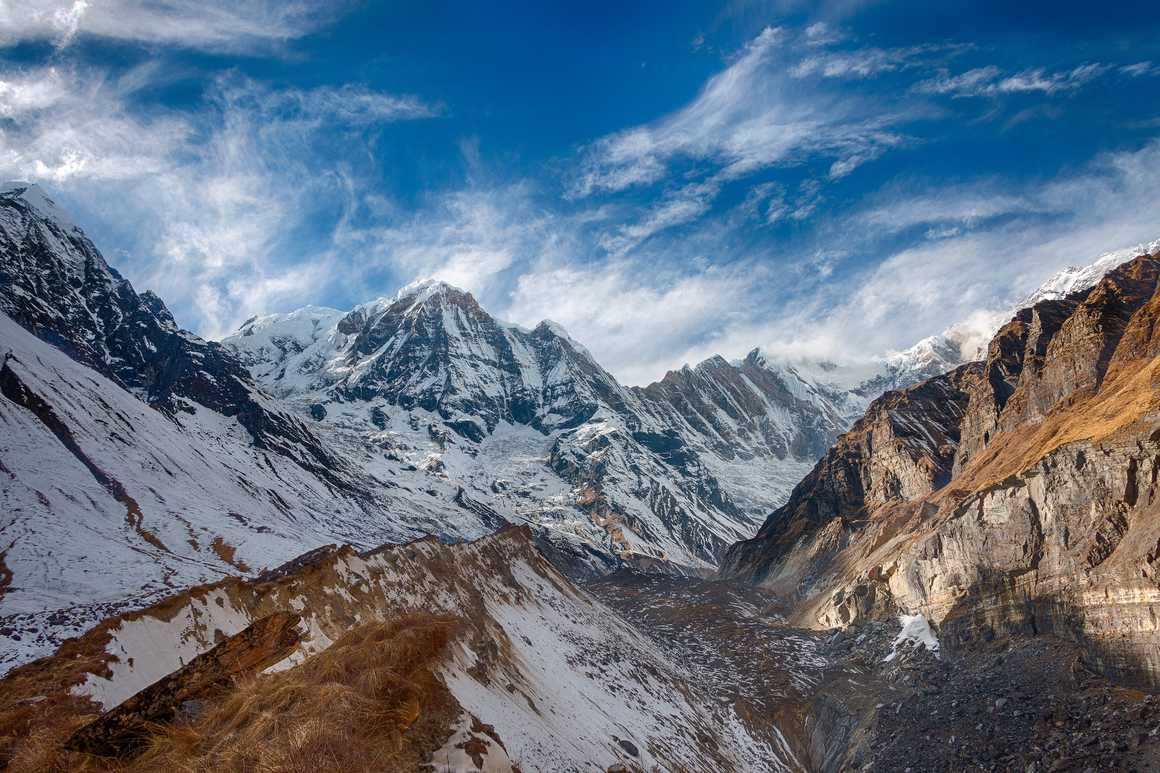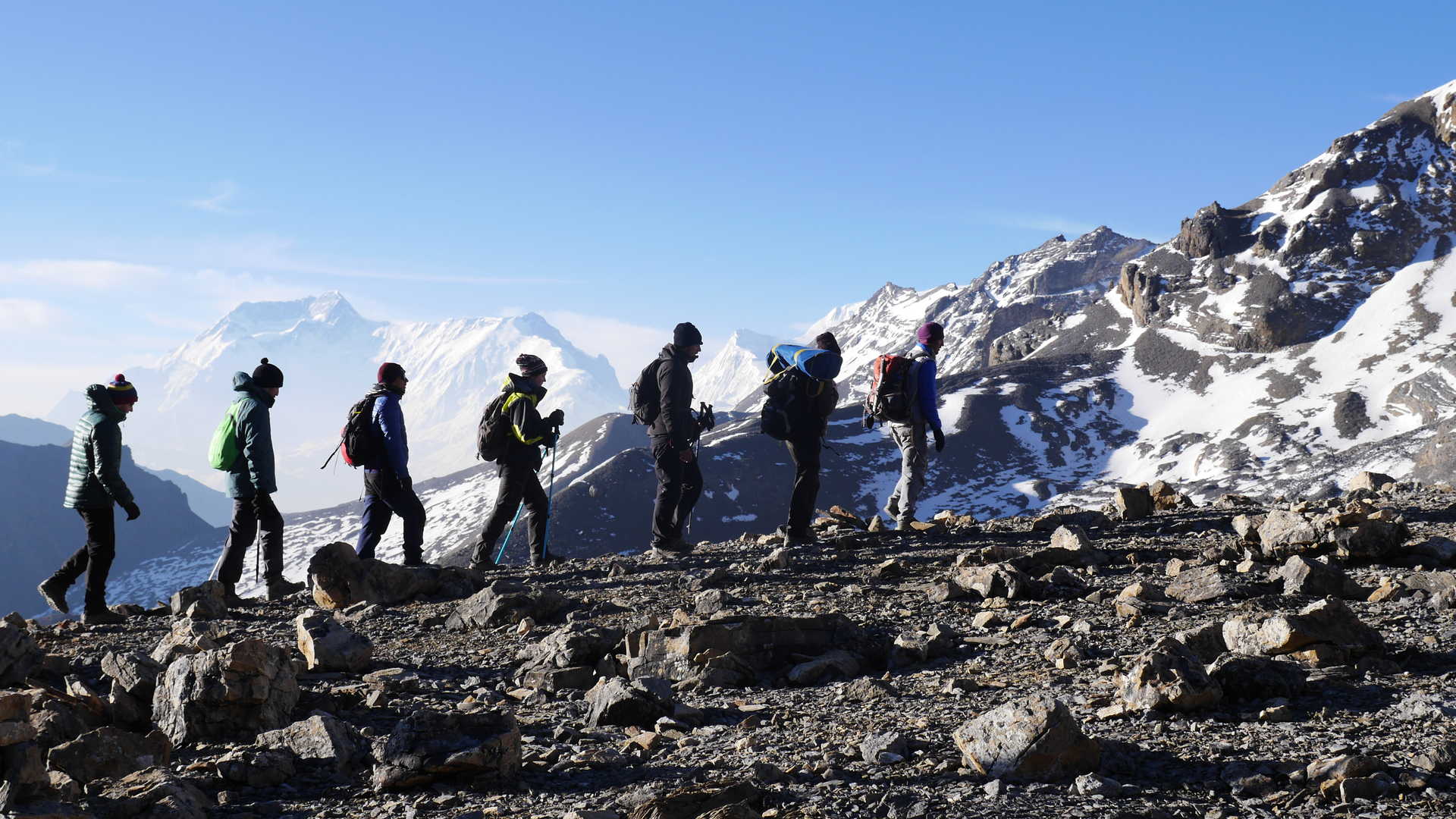about annapurna
Annapurna, Nepal, or officially Annapurna I, is both the 10th highest
mountain in the world, at 8,091m, and the name of the mountain range it sits
within. Annapurna is bordered on
the south by the Pokhara Valley, by the Kali Ganaki Gorge to the west, and by
the Marshyangdi River on the north and east sides. Renowned as being one
of the most difficult and dangerous mountains in the world, Annapurna has been
summitted successfully by 365 people but tragically 72 people have died during
their attempts. The treacherous climbing involved, unpredictable weather
conditions and avalanche risk make the Annapurna summit the second most deadly
in the world, after K2.
Annapurna literally
means 'She Who is Full of Food', but a better translation is 'Goddess of the
Harvest'. Annapoorna devi is a Hindu mother-goddess of the hearth and kitchen,
and provider of food and comfort. She is closely associated with Lakshmi,
goddess of wealth and prosperity.
The Annapurna
Massif boasts a single peak over 8,000m, Annapurna I, and there are 13 more
peaks higher than 7,000 metres and a further 16 that are more than 6,000 metres
high. This awesome massif is home to some of the most iconic hikes in the
world, with the Annapurna Sanctuary Trek and the Annapurna Circuit Trek as two of the most popular Annapurna trekking routes. Annapurna Base Camp is
situated at 4,130m and forms part of the Annapurna Sanctuary trek but can be
completed as a standalone trek and you can pick up the Annapurna trail from
Chomrong. The extraordinary scenery, rugged mountains and local hospitality make
the Annapurnas an unforgettable place to trek in Nepal.
Annapurna Conservation Area
The Annapurna
Conservation Area was the first conservation areas to be formed in Nepal, and is still the largest. It was established in 1986 and is the
responsibility of the National
Trust for Nature Conservation. The area incorporates more than 7,500 square
kilometres of territory, including lands in the Lamjung, Myagdi, Kaski, Mustang
and Manang districts. Its lowest point is only 790 metres above sea level, and
its highest is the peak of Annapurna I at more than 8,000 metres.

The Annapurna Peaks
Annapurna I - 8,091 m (26,545 ft)
Despite its tragic
history, Annapurna I was actually the first peak of greater than 8000 metres to
be climbed. Louis Lachenal and Maurice Herzog were the first to reach the
summit in June of 1950. Until Everest itself was finally summitted a few years
later, this was the highest summit ever attained, despite the fact that higher
non-summit climbs had been made on Everest as early as the 1920s.
Annapurna II - 7,937 m (26,040 ft)
Annapurna II is the
easternmost of the large peaks. It is a fully independent peak, and not much
lower or any less prominent than Annapurna I. It was first successfully
summited by J. O. M. Roberts' expedition in 1960, a feat not repeated until
1969. The Macartney-Snape expedition summited Annapurna II in 1983, the first
to take the south spur route. The expedition was trapped on the mountain by a blizzard
and had been without food for five days when they finally made Base Camp, much
to the surprise and relief of their camp crew. The first successful winter
ascent of Annapurna II was in 2007, by Lhakpa Thinduk, Lhakpa Wangel, Temba Nur
and Philipp Kunz.
Annapurna III - 7,555 m (24,786 ft)
This peak was first conquered in 1961 by Captain Mohan Singh Kohli's expedition. Captain Kohli made the summit with Sonam Girmi and Sinam Gyatso.
Annapurna IV - 7,525 m (24,688 ft)
Annapurna IV was
first successfully summited by the Heinz Steinmetz expedition in 1955 via the North
Face and Northwest Ridge.
Gangapurna - 7,455 m (24,457 ft)
Gangapurna went
unclimbed until 1965, when Gunther Hauser's expedition successfully ascended by
the East Ridge. This Annapurna mountain was named after the Hindu goddess Ganga,
the goddess who personifies the Ganges River.
Annapurna South - 7,219 m (23,684 ft)
Annapurna South is also called Moditse and Annapurna Dakshin. It was summited by Mingma Tsering and S. Uyeyo in 1964, as part of a Japanese expedition.










